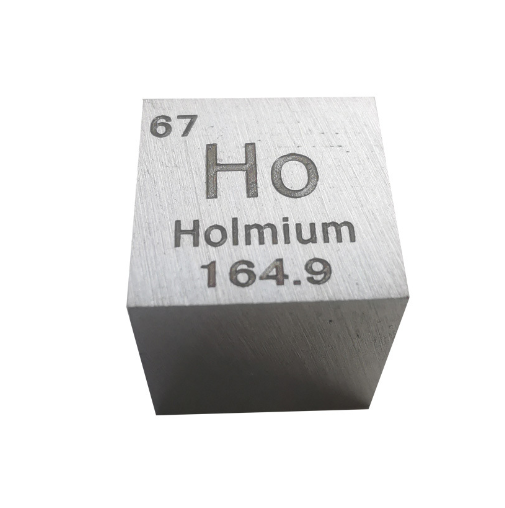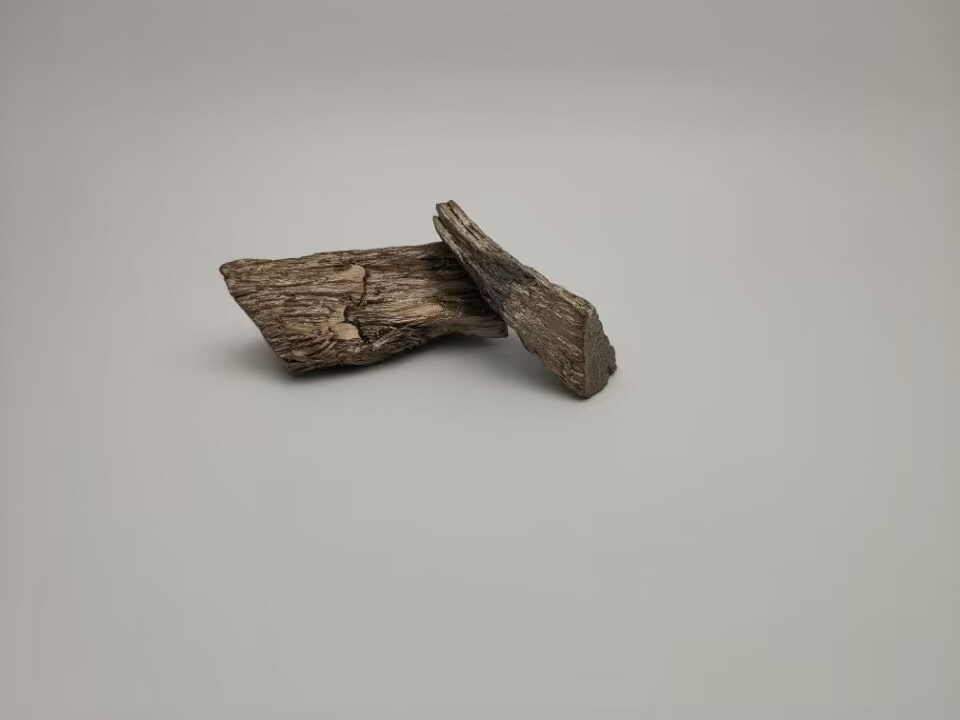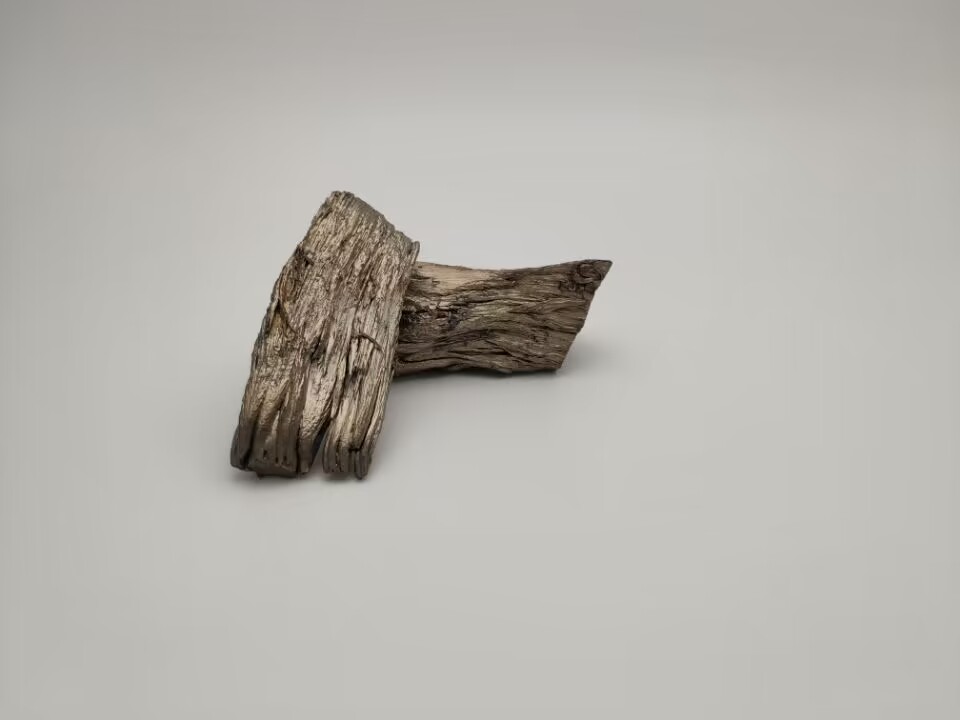1. Discovery of holmium Elements
After Mosander separated erbium and terbium from yttrium in 1842, many chemists used spectral analysis to identify them and determined that they were not pure oxides of an element, which encouraged chemists to continue to separate them. After separating ytterbium oxide and scandium oxide from ytterbium oxide, Cliff separated two new oxides of elements in 1879. One of them was named holmium to commemorate Cliff’s birthplace, the ancient Latin name of Stockholm, the capital of Sweden, Holmia, and the element symbol Ho. Later, in 1886, Boisbodran separated another element from holmium, but the name of holmium was retained. With the discovery of holmium and some other rare earth elements, the other half of the third stage of the discovery of rare earth elements was completed.
2. Physical properties of holmium
Holmium is a silvery white metal, soft and ductile; melting point 1474°C, boiling point 2695°C, density 8.7947g/cm³. Holmium is stable in dry air and oxidizes quickly at high temperatures; holmium oxide is the strongest known paramagnetic substance. Holmium compounds can be used as additives for new ferromagnetic materials; holmium iodide is used to make metal halide lamps – holmium lamps. It is stable in dry air at room temperature and easily oxidized in humid air and at high temperatures. Avoid contact with air, oxides, acids, halogens, and moist water. It releases flammable gases when in contact with water; it is soluble in inorganic acids. It is stable in dry air at room temperature, but oxidizes quickly in humid air and above room temperature. It has active chemical properties. It decomposes water slowly. It can combine with almost all non-metallic elements. It exists in yttrium silicate, monazite and other rare earth minerals. It is used to make magnetic alloy materials.
3. Chemical properties of holmium
It is stable in dry air at room temperature, and easily oxidized in humid air and at high temperatures. Avoid contact with air, oxides, acids, halogens, and humid water. It releases flammable gases when in contact with water; it dissolves in inorganic acids. It is stable in dry air at room temperature, but oxidizes rapidly in humid air and above room temperature. It has active chemical properties. It slowly decomposes water. It can be combined with almost all non-metallic elements. It exists in yttrium silicate, monazite and other rare earth minerals. It is used to make magnetic alloy materials. Like dysprosium, it is a metal that can absorb neutrons produced by nuclear fission. In a nuclear reactor, it continuously burns on the one hand and controls the speed of the chain reaction on the other. Element description: It has a metallic luster. It can react slowly with water and dissolve in dilute acid. The salt is yellow. The oxide Ho2O2 is light green. It dissolves in mineral acid to produce trivalent ion yellow salt. Element source: It is made by reducing holmium fluoride HoF3·2H2O with calcium.
Compounds
(1) Holmium oxide is white and has two structures: body-centered cubic and monoclinic. Ho2O3 is the only stable oxide. Its chemical properties and preparation methods are the same as those of lanthanum oxide. It can be used to make holmium lamps.
(2) Holmium nitrate Molecular formula: Ho(NO3)3·5H2O; Molecular mass: 441.02; It is usually slightly harmful to water bodies. Do not allow undiluted or large quantities of the product to come into contact with groundwater, waterways or sewage systems. Do not discharge the material into the surrounding environment without government permission.
4.Synthesis method of holmium
1. Holmium metal can be obtained by reducing anhydrous holmium trichloride or holmium trifluoride with metallic calcium
2. After holmium is separated from other rare earth elements by ion exchange or solvent extraction technology, metal holmium can be prepared by metal thermal reduction. Lithium thermal reduction of rare earth chloride is different from calcium thermal reduction of rare earth chloride. The reduction process of the former is carried out in the gas phase. The lithium thermal reduction reactor is divided into two heating zones, and the reduction and distillation processes are carried out in the same equipment. Anhydrous holmium chloride is placed in the upper titanium reactor crucible (also the HoCl3 distillation chamber), and the reducing agent metallic lithium is placed in the lower crucible. Then the stainless steel reaction tank is evacuated to 7Pa and then heated. When the temperature reaches 1000℃, it is maintained for a certain time to allow the HoCl3 vapor and lithium vapor to fully react, and the reduced metal holmium solid particles fall into the lower crucible. After the reduction reaction is completed, only the lower crucible is heated to distill LiCl into the upper crucible. The reduction reaction process generally takes about 10h. In order to produce purer metallic holmium, the reducing agent metallic lithium should be 99.97% high purity lithium and double distilled anhydrous HoCl3 should be used.
Holmium laser The application of holmium laser has brought the treatment of urinary stones to a new level. Holmium laser has a wavelength of 2.1μm and is a pulsed laser. It is the latest of many lasers used in surgical operations. The energy generated can vaporize the water between the end of the optical fiber and the stone, forming tiny cavitation bubbles, and transmit energy to the stone, crushing the stone into powder. Water absorbs a lot of energy, reducing damage to surrounding tissues. At the same time, the penetration depth of holmium laser into human tissue is very shallow, only 0.38mm. Therefore, when crushing stones, the damage to surrounding tissues can be minimized, and the safety is extremely high.
Holmium laser lithotripsy technology: medical holmium laser lithotripsy, which is suitable for hard kidney stones, ureteral stones and bladder stones that cannot be broken by extracorporeal shock wave lithotripsy. When using medical holmium laser lithotripsy, the thin optical fiber of the medical holmium laser passes through the urethra and ureter with the help of a cystoscope and a flexible ureteroscope to reach the bladder stones, ureteral stones and kidney stones, and then the urologist manipulates the holmium laser to break the stones. The advantage of this treatment method is that it can solve ureteral stones, bladder stones and most kidney stones. The disadvantage is that for some stones in the upper and lower calyces of the kidney, a small amount of stones will remain because the holmium laser fiber entering from the ureter cannot reach the stone site.
Holmium laser is a new type of laser produced by a pulsed solid laser device made of laser crystal (Cr:Tm:Ho:YAG) with yttrium aluminum garnet (YAG) as the activation medium and doped with sensitizing ions chromium (Cr), energy transfer ions thulium (Tm) and activation ions holmium (Ho). It can be used in surgeries in departments such as urology, ENT, dermatology, and gynecology. This laser surgery is non-invasive or minimally invasive and the patient will experience very little pain during the treatment.
Post time: Nov-14-2024


